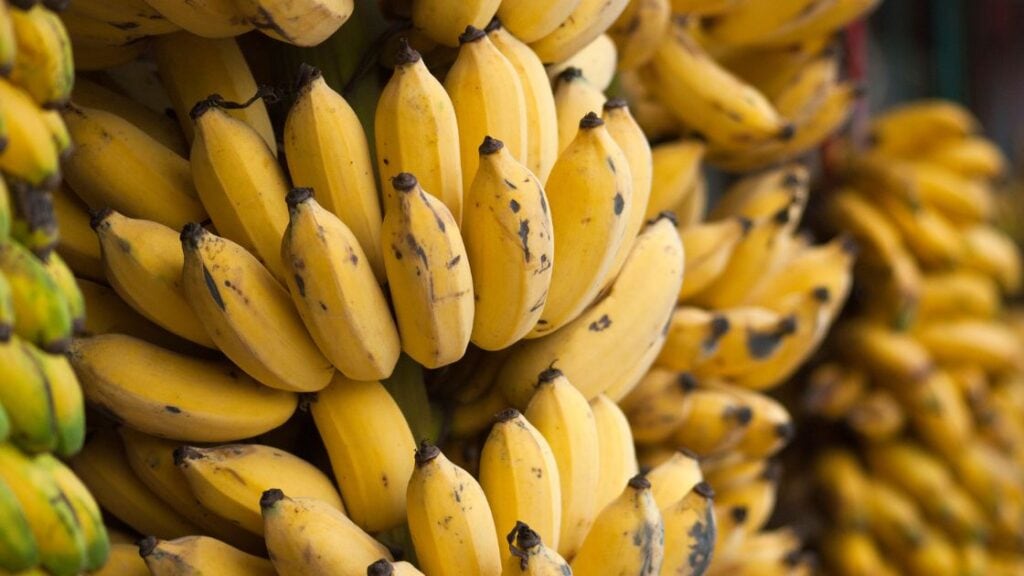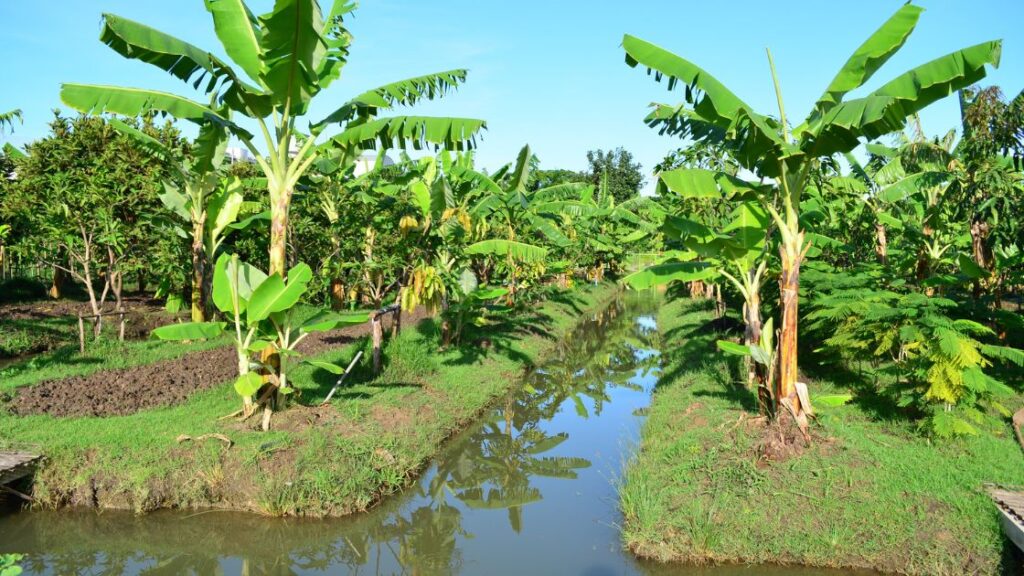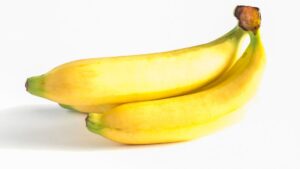Bananas are one of the most beloved fruits in the world, enjoyed by people of all ages and cultures.
From smoothies and shakes to banana bread and pancakes, bananas are versatile and delicious ingredients that can be used in countless recipes.

But have you ever wondered where bananas grow? In this article, we’ll take a deep dive into the origins of bananas, how they became popular, and where they can be found across the globe.
Where do bananas grow?
Bananas are grown in tropical regions around the world, where the climate is warm and humid. Some of the top banana-producing countries include:
- India: India is the largest producer of bananas in the world, accounting for approximately 25% of global production. The state of Maharashtra is the largest banana-growing state in India.
- China: China is the second-largest producer of bananas in the world, with the Yunnan province being the main growing region.
- Philippines: The Philippines is a major exporter of bananas and the third-largest producer in the world. The island of Mindanao is the main banana-growing region.
- Ecuador: Ecuador is the largest exporter of bananas in the world, accounting for around a third of global exports. Bananas are grown in the coastal region of Ecuador.
- Brazil: Brazil is the fourth-largest producer of bananas in the world, with the state of Bahia being the main growing region.
- Uganda: Uganda is the largest banana-producing country in Africa, and bananas are a staple food in the country.
- Costa Rica: Costa Rica is a major exporter of bananas and the fifth-largest producer in the world. Bananas are grown in the Limon province.
Banana plants require lots of sunlight, water, and nutrients to grow. They prefer well-drained soil and can grow up to 30 feet tall.

Each plant produces only one bunch of bananas, which can weigh up to 100 pounds!
History of bananas:
Bananas have been cultivated for thousands of years and were first domesticated in Papua New Guinea.
The fruit was brought to other parts of the world by traders and travelers, eventually making its way to Africa, the Middle East, and Asia.
By the 15th century, bananas had arrived in Europe, brought by Portuguese explorers who discovered them in West Africa.
Bananas became popular in the United States during the late 1800s, when the first shipments of bananas arrived from the Caribbean.
The fruit quickly became a favorite, and by the early 1900s, banana plantations were established across Central and South America.
Today, bananas are one of the most popular fruits in the world and are enjoyed by millions of people every day.
Types of bananas:
There are over 1,000 varieties of bananas, but most of the bananas consumed worldwide are of two types: the sweet, yellow Cavendish banana, and the smaller, sweeter Lady Finger banana.
You can read about several facts about banana.
Other popular varieties include the red banana, the plantain banana, and the cooking banana, which is commonly used in savory dishes.
There are several types of bananas, including:
- Cavendish bananas: These are the most commonly found bananas in grocery stores. They are medium-sized with a slightly sweet taste and soft texture.
- Red bananas: These bananas have reddish-purple skin and sweet, creamy flesh. They are smaller than Cavendish bananas and are often found in specialty markets.
- Plantains: These are a type of banana that is larger and starchier than the typical sweet banana. They are often used in cooking and can be fried, boiled, or baked.
- Lady Finger bananas: Also known as “baby bananas,” these are smaller and sweeter than the Cavendish banana. They have thin skin and are often used in desserts.
- Blue Java bananas: Also known as “ice cream bananas,” these have a creamy, vanilla-like flavor and texture. They have a bluish tint when unripe and are often found in Southeast Asia.
- Gros Michel bananas: These were the most commonly found bananas before the Cavendish banana became popular. They have a sweeter taste and firmer texture than Cavendish bananas and are still found in some parts of the world.
- Burro bananas: These are shorter and thicker than Cavendish bananas with a lemony flavor. They are often used in Latin American cooking.
Note: There may be other types of bananas that are specific to certain regions or countries.
FAQs:
Q. Are bananas a fruit or a vegetable?
A. Bananas are a fruit.
Q. Are bananas grown year-round?
A. Bananas are grown year-round in tropical regions.
Q. How long does it take for a banana plant to produce fruit?
A. It takes between 9-12 months for a banana plant to produce fruit.
Q. How many bananas does one plant produce?

I am a professional health and nutrition writer with extensive experience in the industry. My passion for sharing valuable insights on nutrition and wellness stems from over 15 years of personal training and maintaining a healthy lifestyle. My commitment to continuously educate myself on the latest trends and research in the field allows me to deliver high-quality content that is informative and engaging. My mission is to empower individuals to make informed decisions about their health and well-being through my writing.









